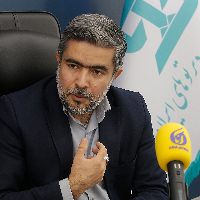Analyzing the Impact of Detector Rotation Angle on Truck Cargo Scanner System Response with the MCNPX Code
Modeling and simulation are crucial in designing and developing complex systems, such as cargo scanner systems. A cargo scanner is a device used to scan and inspect cargo transported by air, land, and sea. These scanners are usually used by customs and security centers to identify potential threats such as weapons, explosives, and contraband. One of the key benefits of using modeling and simulation is that it allows designers to test different scenarios and configurations without the need for physical prototypes. This can save time and money, as well as reduce the risk of costly mistakes. This study examines how the parameter angle affects detector responses in truck cargo scanner systems using the MCNPX code. The angle refers to the angle at which the beam generated from the beam generator interacts with the detector's normal surface, an important factor in ensuring the accuracy and reliability of cargo scanning systems in imaging. Initially, the X-ray spectrum output was calculated from the accelerated 6 MV electrons due to tungsten target impact and validated against spectra from other studies. The results demonstrated good agreement between the output spectra. The changes in counts recorded in the vertical direction of the detector arrays showed that the count difference between the lowest pixel and highest pixel is approximately 33%, while the count changes from the closest pixel to the farthest pixel to the beam generator in the horizontal direction are about 60%. Subsequently, the angle of each array was adjusted so that the emitted rays from the cone beam generator were perpendicular, and this case was compared to cases where the array angle was 20 and 30 degrees. The results revealed that when exposed to perpendicular radiation, the signal recorded in detectors is greater than that of a rotated detector, and the count rate in the detector decreases as the angle increases.
-
Design and construction of a self-shielded radiation system for agricultural products
Mahdi Monshizadeh, Ali Soleymani, Mahdi Khosravani, Morteza Yahaghi, Hossein Sayyar, Ramin Roozedar Moghaddan, Aydin Ghaleh Asadi, Abolfazl Salehizadeh, Hamed Aleebrahim Dehkordi, Mohammad Sadegh Eslami, Abbas Farrokhizadeh, Omid Haghighi, Hamidreza Saravani, Ali Taheri *, Seyyed Pezhman Shirmardi
Iranian Journal of Physics Research (IJPR), -
Monte Carlo simulation and performance evaluation of vehicle radiation portal monitor
Mojtaba Askari, Erfan Javadi, Aydin Ghalehasadi, Mahdi Monshizadeh, Mahdi Khosravani, Hossein Sayyar, Mohsen Sharifzadeh, Ramin Roozedar, Omid Haghighi, Mohammadsadegh Eslami, Abbas Farrokhizadeh, Ali Taheri *,
Iranian Journal of Radiation Safety and Measurement,


